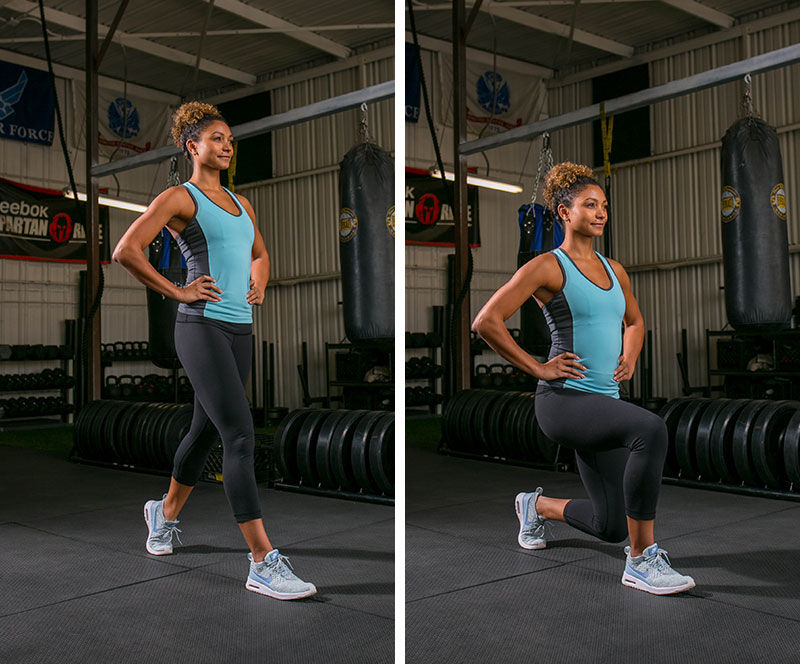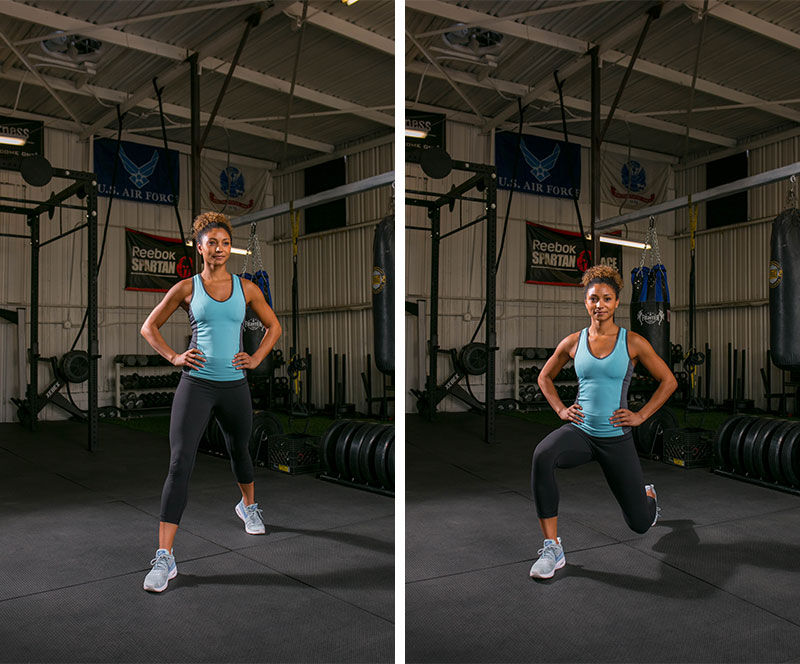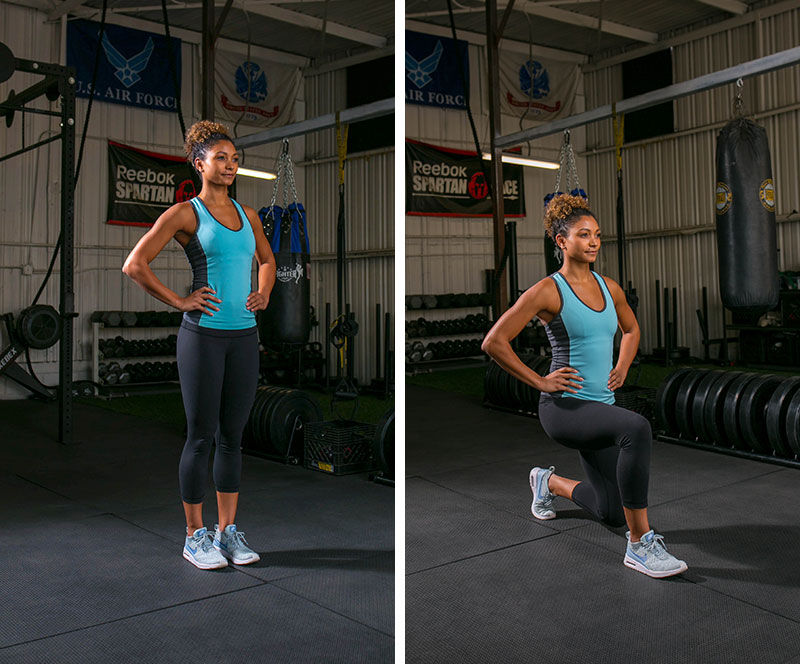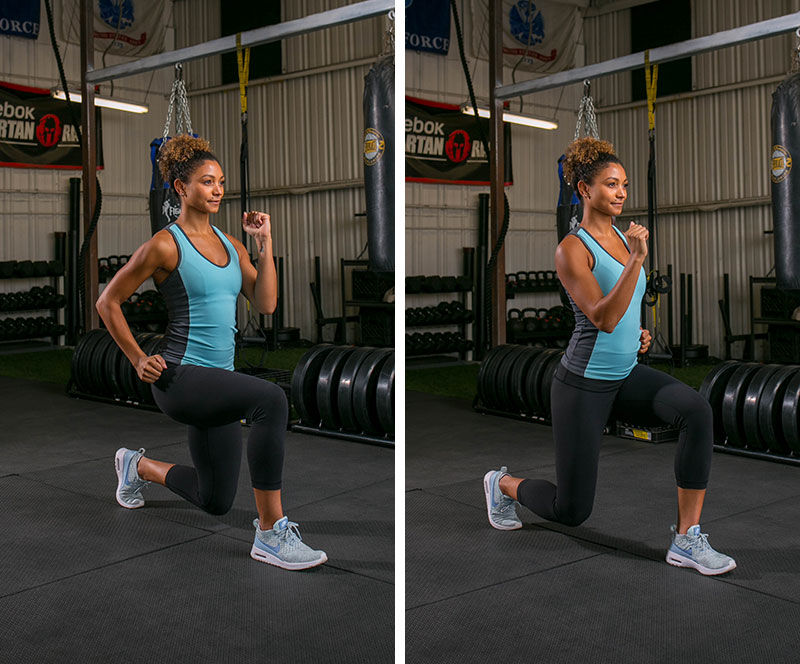The lunge is one of the most effective exercises for targeting the lower body. It activates the quads, glutes and hamstrings, and helps improve lower-body strength, balance and stability. And if that isn’t enough to get you lunging, lunging activates the core muscles as well.
In addition, lunges are a great tool for creating leaner legs, and there are a number of variations you can try to target different parts of the lower body. Here are five fun and effective lunge variations to consider adding to your lower-body routine. You can add one or two variations to a lower-body workout or one lunge variation to a total-body workout.
Lunge Variations
Standard Lunge
Begin standing with feet together. Step forward with the right foot (lead foot) while keeping the left foot in place. Bend the knees and drop the left knee (back leg) to the floor, creating a 90-degree angle with both the left and right knees. Be sure to keep your right knee behind your front toes, your core engaged and your torso tall throughout the movement. Once both knees are at 90 degrees, push off your right foot (front leg) and return to standing. Repeat with the opposite leg.

Diagonal Lunge
Begin standing with feet together. Step forward with the right foot at a 45-degree angle and drop the back knee down to the floor. Use the right foot to push off the floor and return to the starting position. Alternate legs. This variation targets the glutes, hamstrings and quads, while also engaging the muscles of the inner and outer thighs.

Lateral Lunge
Begin standing with feet together. With the right foot, step to the right and shift your body weight toward your right foot. Bend the right knee and perform a squat motion while keeping your left leg straight. Once you reach a 90-degree angle with the right knee, push off your right foot and bring your feet back together. Again, be sure to keep the torso tight and the feet together. Alternate legs. This variation targets the major muscle groups of the legs, including the inner and outer thighs.

Reverse Lunge
Begin standing with feet together. With the right foot, step backward and drop your your right knee to the floor, creating a 90-degree angle. Push off your right foot to bring both feet back together to the starting upright position. Alternate legs. This variation is particularly effective for working the glutes.

Walking Lunge
Begin standing with feet together. Step the right foot forward and assume the standard lunge position. Push off the floor with the left foot and bring it forward to meet the right foot. You may either pause here to regain your balance or step forward with the left foot into a forward-lunge position. Repeat, alternating legs, for the desired time or distance. This variation requires a little more balance, but is great for engaging the core and the stabilizing muscles of the lower body.

Sets and Repetitions
The number of sets and repetitions you choose to do will vary based on your fitness level, desired outcome and the amount of external resistance you use. For body-weight lunges, aim for three to four sets of 15-20 repetitions per leg. Beginners should start with 2-3 sets of 10-12 repetitions per leg.
If you are adding external resistance to your lunges, such as a barbell or dumbbells, select a weight that allows you to perform 12-15 lunges per leg for 3-4 sets. Beginners should start with 2-3 sets of 10-12 repetitions per leg.
A Word of Caution
For some people, lunges may place a lot of stress on the knees. Before partaking in any exercise program, be sure to receive clearance from your physician. If you are not permitted to do lunges, or if you feel any sort of pain in the lower body when performing a lunge, please avoid this exercise. Squats are a great alternative on lunges and do not place a high degree of isolated stress on each knee.
Deliver the individualized programs people need to adopt long-term, healthy behaviors with ACE’s Personal Trainer Certification.




 by
by 






 by
by